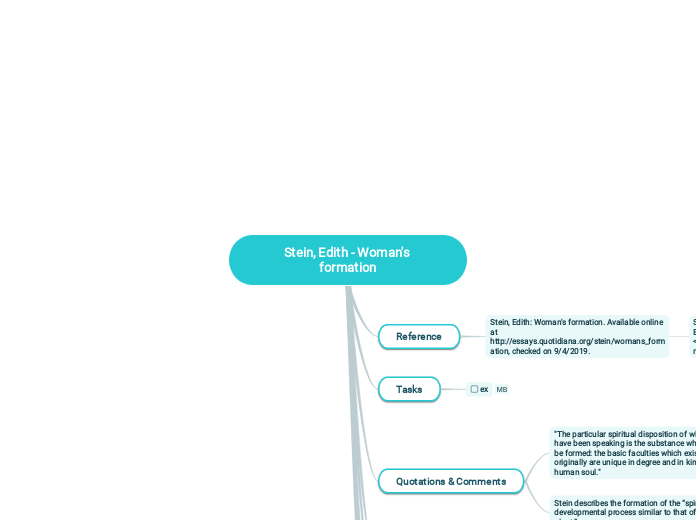Section 2: Women in Public Life
Susan B. Anthony
Susan B. Anthony was a prominent American civil rights leader who played a big role in the 19th century women's rights movement. She was co-founder of the first Women's Temperance Movement and also co-founded the women's rights journal, The Revolution.
Nawsa
Womens Suffrage
The main point of this was the right of women to vote and to run for office
NACW
The NACWs (also know as The National association of Colored Women Clubs) founders consist of Harriet Tubman, Margaret Murray Washington, Frances E.W. Harper, Ida B Wells, and Mary Church Terrell. Their objectives were to protect the rights of women and younth, promote the education of women, and achieve a high level of education for African Americans.
Section 3: Teddy Roosevelts Square Deal
Theodore Roosevelt
Trust Busting
Trust Busting is government activities seeking to dissolve corporate trusts and monopolies
1902 Coal Strike
This strike consisted of workers from Pennsylvania asking for higher wages, shorter workdays and the recognition of their union. The strike threatened to shut down the winter fuel supply to all major cities.
Upton Sinclair
Railroad Regulation
NAACP
Pure food & Drug act
Meat Inspection Act
The was enacted to ensure that meat and meat products are slaughtered and processed under sanitary conditions.
Square Deal
A square Deal is a fair and honest arrangement
Section 4: Progressivism Under Taft
William Howard Taft
was the 27th President of the United States,
Bull Moose Party
Woodrow Wilson
Payne Aldrich Tariff
was the first change in tariff laws since the Dingley Act of 1897; the issue had been ignored by President Theodore Roosevelt. The Republican platform of 1908 pledged revision of the tariff downward, and to this end President Taft called Congress into special session. It lowered 650 tariff schedules, raised 220, and left 1,150 unchanged.
Gifford Pinchot
He was an American forester and politician. Pinchot served as the first Chief of the United States Forest Service from 1905 until his firing in 1910, and was the 28th Governor of Pennsylvania, serving from 1923 to 1927, and again from 1931 to 1935. He was a member of the Republican Party for most of his life, though he also joined the Progressive Party for a brief period. He is known for reforming the management and development of forests in the United States and for advocating the conservation of the nation's reserves by planned use and renewal.
Section 1: The Origins of Progressivism
Prohibition
Prohibition is the banning of alcohol. People could not manufacture, sale, or transport it. This law was inforced on October 28, 1919.
Efforts to limit working hours
Progressive Movement
The main goal of the Progressive movement was to "purify" the government. But, the major goals were
1. Protecting Social Welfare.
2. Fostering Efficiencey.
3. Moral Improvement.
4. Economic Reform.
Florence Kelley
She was an advocate for improving the lives of women and children. She was a social reformer whose sympathies lay with the powerless, especially working women.
Section 5: Wilsons New Freedom
Nineteenth Amendment
This amendment prohibits any United States citizen to be denied the right to vote based on sex. It was ratified on August 18, 1920. The Constitution allows the states to determine the qualifications for voting, and until the 1910s most states disenfranchised women. The amendment was the culmination of the women's suffrage movement in the United States, which fought at both state and national levels to achieve the vote. It effectively overruled Minor v. Happersett, in which a unanimous Supreme Court ruled that the Fourteenth Amendment did not apply to women or give them a right to vote.
Federal Reserve System
This is the central banking system of the United States. It was created on December 23, 1913, with the enactment of the Federal Reserve Act, largely in response to a series of financial panics, particularly a severe panic in 1907. Over time, the roles and responsibilities of the Federal Reserve System have expanded and its structure has evolved.
Sixteenth Amendment
The sixteenth amendment allows the Congress to levy an income tax without apportioning it among the states or basing it on Census results.
Federal Trade Commission
Clayton Anti-trust Act
was issued to strengthen the Sherman Antitrust Act of 1890.
Carrie Chapman Catt
Catt revitalized the National American Woman Suffrage Association and played a leading role in its successful campaign to win voting rights for women
Ch. 9: The Progressive Era









